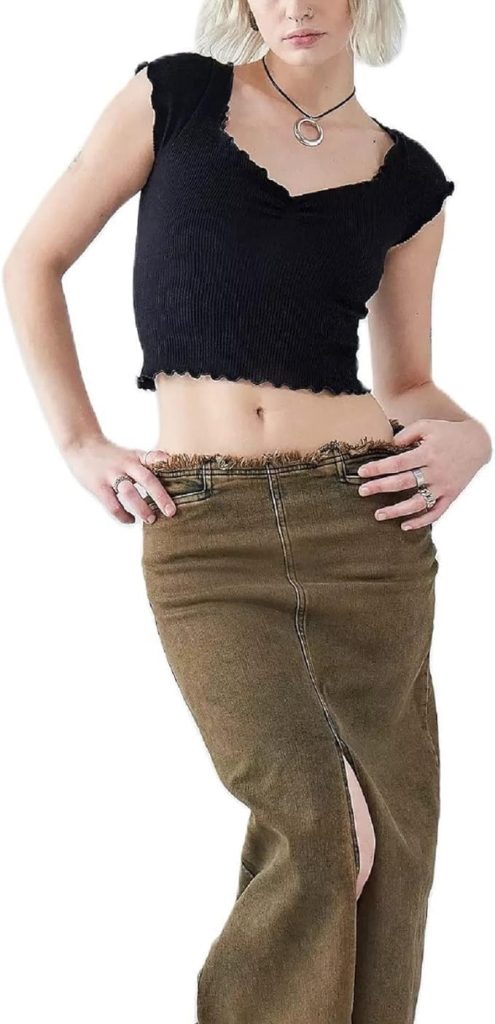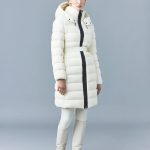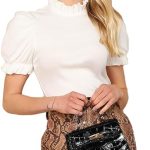Goth clothing is a subversive and captivating style that encompasses a unique blend of dark aesthetics and individualistic expression. In this article, we will delve into the world of goth fashion, exploring its historical roots, key elements and characteristics, symbolism and accessories, the role of music and subculture, contemporary goth fashion trends, and the impact of goth clothing in mainstream culture.

I. Historical Roots of Goth Fashion
1.1 Origins in Gothic Subculture:
Goth fashion originated in the late 1970s and early 1980s as part of the gothic subculture, which was deeply influenced by gothic literature, post-punk, and dark wave music. The subculture emerged as an alternative and subversive movement that rejected mainstream norms and celebrated the dark, macabre, and introspective aspects of life.
1.2 Influence from Victorian and Romantic Eras:
Goth fashion draws inspiration from the Victorian and Romantic eras, embracing elements of Victoriana, romanticism, and decadence. The styles of these eras resonate with goth fashion enthusiasts due to their elegance, intricacy, and the evocative atmosphere they create. Lace, corsets, ruffled collars, and ornate details reminiscent of these periods are frequently incorporated into goth clothing.

II. Key Elements and Characteristics of Goth Fashion
2.1 Dark Color Palette: Embracing the Shadows
Goth clothing is characterized by its dark color palette, which serves as the foundation of the aesthetic. Black, deep purples, blood reds, and rich blues dominate goth fashion, creating an atmosphere of mystery and allure. These dark hues embody the goth subculture’s fascination with darkness, melancholy, and introspection. The use of a dark color palette in goth clothing provides a visual representation of the subculture’s ethos, igniting a sense of intrigue and drama.
The dark color palette serves multiple purposes in goth fashion. Firstly, it creates a visual contrast to traditional mainstream fashion, which often favors lighter and brighter colors. By embracing a dark color scheme, goth fashion enthusiasts challenge societal norms and expectations, showcasing a unique and alternative style. Secondly, dark colors are associated with emotions such as sadness, mystery, and rebellion. By incorporating these colors into their outfits, goth fashion enthusiasts express their complex emotions and their connection to a subculture that champions individuality and non-conformity.
2.2 Layers and Textures: Creating Depth and Visual Interest
Layering is a fundamental aspect of goth fashion, allowing individuals to create outfits with depth and visual interest. Goth clothing often involves wearing multiple garments simultaneously, showcasing a diverse range of textures and fabrics. Layering adds complexity to the overall look, offering a multidimensional aesthetic that captures attention and sparks curiosity.
The incorporation of various layers and textures allows goth fashion enthusiasts to experiment with different combinations and styles. Corsets, lace overlays, fishnet stockings, and flowing fabrics like chiffon and velvet are commonly seen in goth outfits. These materials create a contrast in textures, adding visual richness and tactile appeal. The juxtaposition of different textures enhances the overall goth aesthetic, contributing to its unique and captivating allure.
Layering also serves practical purposes in goth fashion. The ability to add or remove layers provides adaptability to different weather conditions and occasions, ensuring comfort and functionality. This feature is particularly important in goth subcultures where events like music festivals and social gatherings can involve spending extended periods outdoors. By layering garments, goth fashion enthusiasts can adjust their outfits accordingly, ensuring both style and comfort.
In conclusion, the key elements and characteristics of goth fashion encompass a dark color palette and the art of layering. The use of dark colors like black, deep purples, and blood reds creates an atmosphere of mystery and rebellion. Layering multiple garments with varying textures adds depth, complexity, and visual interest to goth outfits. These elements contribute to the captivating and individualistic aesthetic of goth clothing, making it a distinct and enduring style within the fashion world.

III. Symbolism and Accessories in Goth Fashion
3.1 Symbolism and Subcultural References:
Goth clothing often features symbolic imagery and references, drawing inspiration from the occult, mythology, and gothic literature. Symbols such as crosses, ankh, pentagrams, and skulls are commonly incorporated into goth garments, adding an element of mystery and spirituality to the overall aesthetic.
3.2 Statement Accessories:
Accessories play a significant role in goth fashion, serving as an extension of individual style and self-expression. Statement accessories such as chokers, studded belts, dramatic hats, and fingerless gloves enhance the overall goth look and add a touch of rebellion and edge.
IV. The Role of Music and Subculture
4.1 Influence of Dark Wave and Post-Punk:
Goth fashion is deeply intertwined with the music that defines the gothic subculture. Dark wave and post-punk music genres heavily influenced the development of goth fashion. Bands such as Bauhaus, Siouxsie and the Banshees, and The Cure not only shaped the soundscape but also embodied the aesthetic sensibilities that goth fashion embraces.
4.2 Subversive Identity and Alternative Lifestyles:
Goth fashion is more than clothing; it is a statement of identity and a reflection of alternative lifestyles. The gothic subculture provides a sense of belonging and community for individuals who embrace goth fashion. It offers a space for self-expression, acceptance, and the exploration of unconventional aesthetics and ideas.

V. Contemporary Goth Fashion Trends
5.1 Fusion with Modern Styles:
Contemporary goth fashion has evolved and diversified, incorporating elements from various subcultures and fashion trends. Fusion with modern styles such as streetwear, punk, and even high fashion has brought new dimensions to goth fashion. This fusion allows for the incorporation of newer silhouettes, fabrics, and colors while staying true to the dark aesthetic.
5.2 Gender Fluidity and Inclusivity:
Contemporary goth fashion has also embraced a more inclusive and gender-fluid approach, breaking away from traditional gender norms. Non-binary and genderqueer individuals have found a safe haven within goth fashion, where they can explore and express their diverse identities.

VI. Impact of Goth Clothing in Mainstream Culture
6.1 Influence on Mainstream Fashion and Pop Culture:
The influence of goth fashion on mainstream culture cannot be overlooked. Elements of goth fashion, such as dark color palettes, lace details, and statement accessories, have been incorporated into mainstream fashion collections. Goth-inspired aesthetics have also made their way into popular culture through music, film, and television, becoming iconic symbols of rebellion and individuality.
6.2 Pushing Boundaries and Challenging Norms:
Goth fashion continues to push boundaries, challenge societal norms, and expand its impact in mainstream culture. Its insistence on embracing darkness, alternative beauty standards, and non-conformity has empowered individuals to express their authentic selves and redefine fashion norms.
In conclusion, goth clothing is an intricate and captivating style that reflects a subversive and individualistic mindset. Its historical roots, key elements and characteristics, symbolism and accessories, connections to music and subculture, contemporary trends, and impact on mainstream culture make goth fashion a remarkable and enduring force in the fashion landscape.


